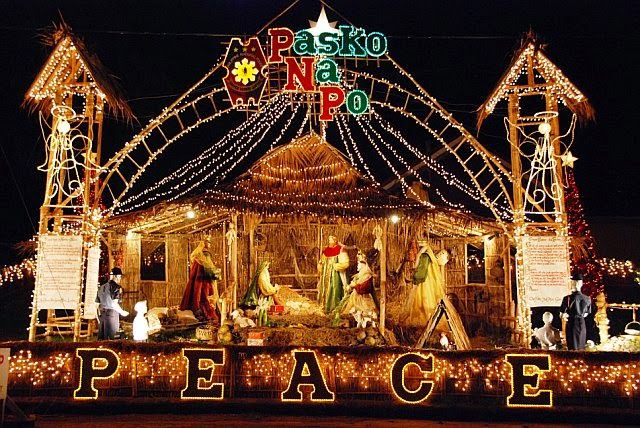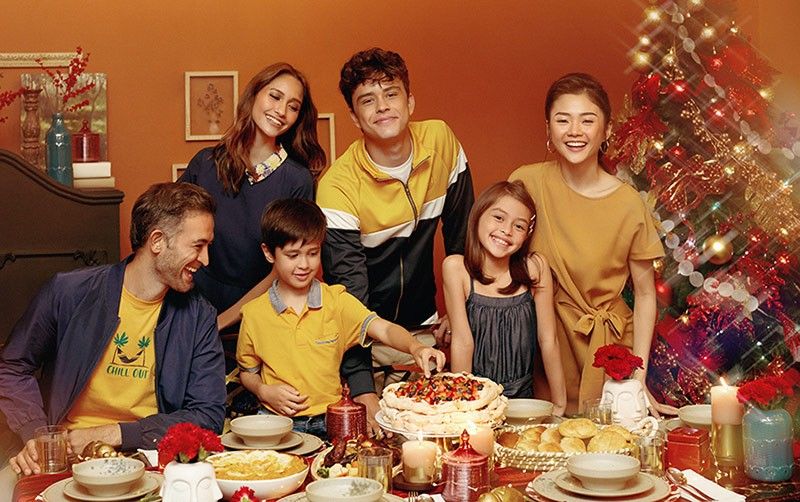Explore the 7 Vibrant Filipino Christmas Traditions
Filipino Christmas traditions hold immense importance in Filipino culture. The festive holiday spirit is palpable in unique aspects, like the Simbang Gabi culminating in the Misa de Gallo on Christmas Eve. The vibrant Parol, a colorful lantern, symbolizes the Star of Bethlehem.
Celebrating Christmas in the Philippines is distinct due to its long duration, starting as early as September and extending to January. The spirit of giving and familial unity are key elements during this time.
This article will dive into the vibrant Filipino Christmas. We will explore the unique aspects that make the Philippines Christmas celebrations truly special.
Early and Extended Christmas Season

The Philippines’ early and extended Christmas duration is a joyous time filled with festivities and cheerful anticipation. Beginning as early as September, the “ber” months mark the start of Christmas preparations and celebrations.
The atmosphere becomes vibrant; decorating Christmas trees adorning homes, streets, and establishments creates a festive ambiance. This extended duration allows Filipinos to fully embrace the spirit of Christmas fully, fostering a sense of togetherness, gratitude, and generosity.
People are eager to see their loved ones, and the atmosphere is excitement and anticipation. This longest Christmas season in the Philippines reflects the importance of the season in Filipino culture.
Unique Christmas Carols and Music

The Philippines has a rich tradition of unique Christmas carols and music that add a special touch to the festive season. Filipino Christmas songs, known as “Paskong Pinoy,” blend traditional and modern music styles.
Traditional carols like “Ang Pasko ay Sumapit” and “Pasko na Naman” evoke a sense of nostalgia. While modern hits like “Pasko Na, Sinta Ko” and “Christmas in Our Hearts” have become beloved classics.
Filipino Christmas music’s harmonious melodies and heartfelt lyrics contribute to the festive spirit. Christmas songs and carols make a truly unique aspect of Christmas tradition in the Philippines.
Noche Buena: Christmas Eve Feast

Noche Buena is the main event of Christmas celebrations in the Philippines, celebrated on the eve of December 25. It is a time when Filipino families come together to share a festive meal and enjoy each other’s company.
One of the highlights of Noche Buena is the feast of traditional Filipino Christmas foods. These include Lechon, Bibingka, purple rice cake, Fruit Salad, Queso de Bola, and many more. The food is prepared with much love and care, creating a sense of unity and togetherness.
Noche Buena is also a time for sharing, generosity, whole family reunions, and gathering. Families invite less fortunate people to celebrate and share food, gifts, and blessings. Additionally, they rekindle relationships, reminisce old events and memories, and make new ones.
The tradition of gathering together to the Philippines celebrate Christmas and enjoying feasts reinforces familial ties and community bonds. Noche Buena is a testament to the rich cultural heritage of the Philippines, where warmth, hospitality, and sharing are at the heart of Christmas celebrations.
Simbang Gabi and Misa de Gallo

Simbang Gabi, also known as Misa de Gallo, is one of the Philippines’ Christmas traditions that involves nine dawn masses leading up to Christmas Day. Originating from Spanish colonial times, it is a time of spiritual preparation and devotion to the birth of Jesus Christ.
During Simbang Gabi, churches are filled with devout Catholics attending early morning masses. The atmosphere is heightened by processions, singing traditional hymns, and street vendors selling native delicacies and Christmas goodies. Filipinos dress in their best attire, often wearing traditional clothing like barong Tagalog and Filipino dress.
Misa de Gallo commemorates the journey of Mary and Joseph to Bethlehem and the birth of Jesus in a humble stable. It is reflected in the true meaning of Christmas and the importance of attending mass. It serves as seeking spiritual renewal and embracing the values of love, peace, and hope.
Simbang Gabi and Misa de Gallo are treasured traditions that showcase the deep-rooted faith of Filipinos. They highlight the spiritual aspect of Christmas, making it a truly meaningful and culturally significant time of year.
Parol: The Filipino Christmas Lantern

The Parol is a unique and iconic Filipino Christmas decoration, blending Spanish Catholicism and Filipino creativity. A star-shaped lantern symbolizes the Star of Bethlehem and guides the way to Jesus Christ’s birthplace.
Parols were traditionally made of bamboo frames covered with colorful Japanese paper and adorned with intricate designs and patterns. However, modern interpretations of Parols have evolved, utilizing various materials such as capiz shells and plastic. It is even used recyclable materials, showcasing the creativity and resourcefulness of Filipinos.
Festivals and competitions celebrating the craftsmanship of Parol-making are held throughout the Philippines. These events include Parol-making contests and exhibitions where master artisans and enthusiasts showcase their skill and creativity.
One notable event is the Annual Giant Lantern Festival in Pampanga, showcasing gigantic Parols. They light up the night sky with dazzling displays of lights and colors.
During Christmas, the Parol adds a beautiful and festive touch to Filipino homes and communities. It also serves as a reminder of the true meaning of the season and the guiding light that Jesus brings to our lives.
Belen: The Traditional Nativity Scene

The Belen is significant in Filipino Christmas decorations, a classic nativity tableau illustrating the birth of Jesus Christ. It plays an integral role in Catholic Filipino households, symbolizing the central message of Christmas.
Belen displays come in various interpretations and styles, with different sizes and materials. Creativity and personal touches are encouraged, making each Belen unique. Beyond being a decorative item, the Belen also plays a role in religious celebrations and devotions.
It invites admiration and reflection during the Christmas season. Many participate in novena and prayer activities centered around the Belen, deepening their faith and connection to the Christmas story.
Other Filipino Christmas Traditions
In addition to the well-known Philippines Christmas traditions, other unique traditions add to the festive atmosphere during the holiday season.
Gift-giving and Exchange of Presents

Gift-giving and exchanging gifts are an integral part of Filipino Christmas traditions. Individuals and family members exchange thoughtful gifts and gestures as a way of showing love and appreciation.
What sets Filipinos Christmas presents-giving apart is the emphasis on thoughtful gestures and the sense of obligation towards godparents or “ninong” and “ninang.” This Filipino-version Santa Claus, known as Santa Klausa, is seen as a symbol of generosity and goodwill.
For those seeking Christmas present ideas that cater to loved ones, our “Christmas Gifts Philippines” post offers suggestions and inspiration.
Caroling and Street Performances
Filipino Christmas caroling is another cherished tradition. Groups of children and youth go from house to house singing traditional Filipino carols known as Kundiman. It is a way to spread Christmas cheer and an opportunity for communities to come together and share the season’s joy.
Paskong Pinoy: Filipino-style Christmas Celebrations Abroad

For overseas Filipino communities, Paskong Pinoy refers to the Philippines’ Christmas celebrations preserved and celebrated abroad. It is a way for Filipinos living away from home to connect with their cultural roots and keep Filipino traditions alive.
These traditions contribute to Filipino Christmas celebrations’ vibrant and festive spirit. This reflects the spirit of love, unity, and joy that marks this special time of year.
FAQs
Christmas in the Philippines is unique due to its rich traditions, long celebration period, and blend of both indigenous and Hispanic customs.
Christmas season in the Philippines starts on September 1st, also known as the beginning of the “Ber Months.”
The Christmas symbol capital of the Philippines is San Fernando, Pampanga.
Conclusion
The Filipino Christmas traditions are truly special, and they continue to be celebrated and cherished by Filipinos worldwide. They reflect the Filipino people’s deep-rooted faith, strong community bonds, and rich cultural heritage.
As the holiday season approaches, let’s immerse ourselves in the festive spirit of the Philippines. Enjoy and experience the warmth, joy, and meaningful traditions that make Filipino Christmas special.
Tags: How-to
As the youngest member of the Hometoppicks team, Adele brings a fresh Gen-Z perspective to Shopping-related content. With an agile mind and seasoned online shopping experience, she offers readers valuable insights, cost-saving solutions, and captivating purchasing suggestions. Rely on Adele's keen grasp of tech trends and comprehensive product knowledge for the best shopping decisions in this tech-driven marketplace. You can find more about her here.
